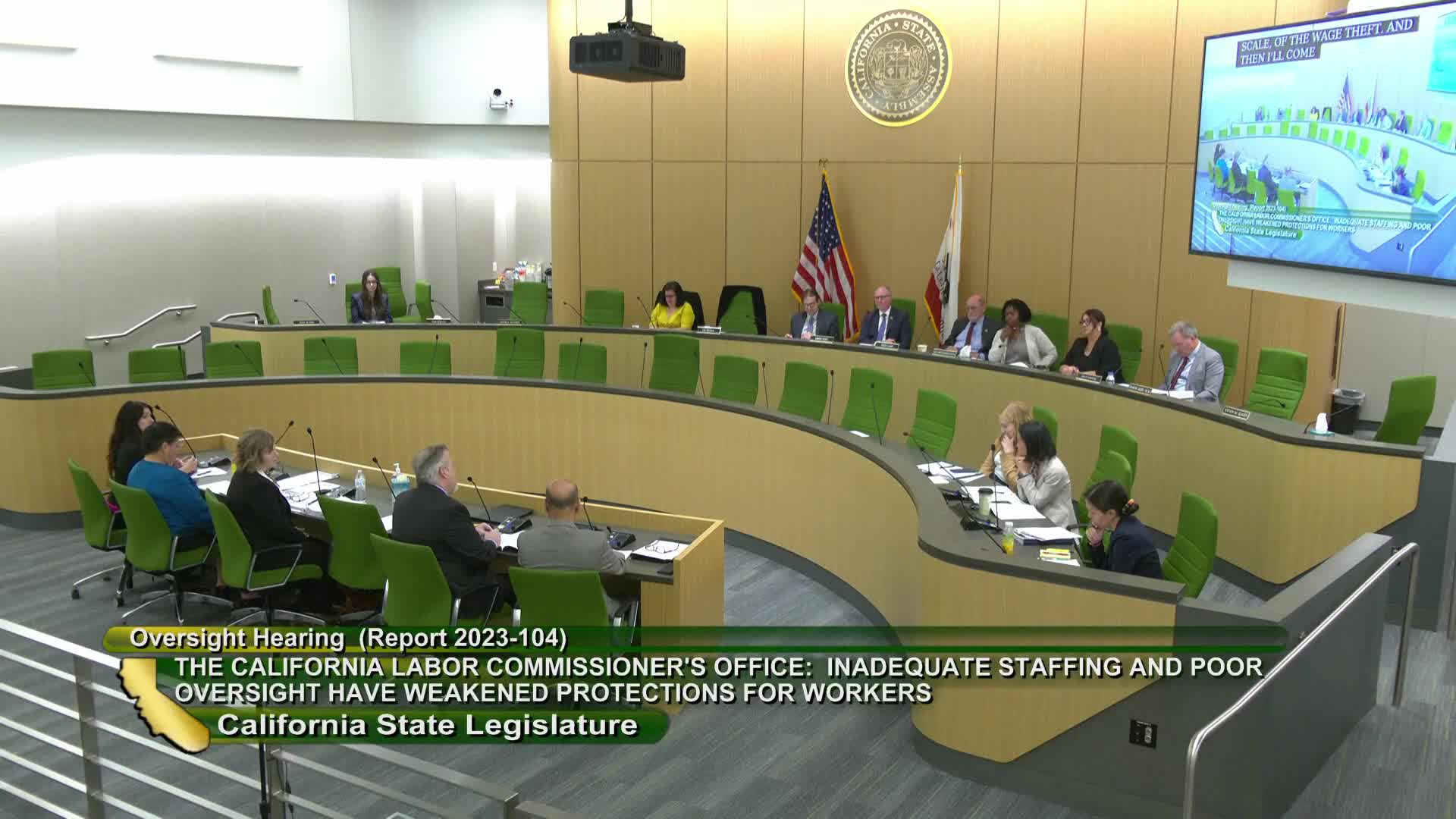Labor Commissioner faces staffing crisis amid soaring claims
June 20, 2024 | California State Assembly, House, Legislative, California

This article was created by AI summarizing key points discussed. AI makes mistakes, so for full details and context, please refer to the video of the full meeting. Please report any errors so we can fix them. Report an error »

In a recent government meeting, discussions centered on the pressing need for the Labor Commissioner’s office to reassess job classifications and minimum qualifications for staff positions. This review comes in light of an audit revealing discrepancies in staffing levels and workload expectations, which have significant implications for the office's ability to manage an increasing number of claims.
The audit highlighted that the Labor Commissioner is currently evaluating the job specifications for various positions to ensure they align with the necessary knowledge, skills, and abilities required for effective performance. This initiative aims to address concerns raised about the appropriateness of minimum qualifications, which have previously hindered hiring efforts.
A key point of discussion was the dramatic increase in claims, particularly in San Bernardino County, where claims surged from 869 to 5,000. This spike underscores the urgent need for the Labor Commissioner to understand staffing requirements better and to establish realistic workload expectations for employees. The audit emphasized that as claims rise, so too must the number of staff available to adjudicate them, suggesting that the current staffing levels may be insufficient to meet demand.
Participants in the meeting expressed frustration over the lack of concrete recommendations from the audit regarding how to formulate a budget that accommodates this growth. While the audit identified the need for a more strategic approach to staffing and workload management, it did not provide a specific formula for determining the number of employees required to handle the increasing volume of claims.
The overarching message from the discussions was clear: without a thorough analysis of staffing needs and workload expectations, the Labor Commissioner’s office risks overburdening its employees, which could lead to higher turnover rates and further complicate efforts to attract and retain qualified staff. As the office moves forward, it will be crucial to develop a comprehensive strategy that not only addresses current challenges but also positions the agency for future success.
The audit highlighted that the Labor Commissioner is currently evaluating the job specifications for various positions to ensure they align with the necessary knowledge, skills, and abilities required for effective performance. This initiative aims to address concerns raised about the appropriateness of minimum qualifications, which have previously hindered hiring efforts.
A key point of discussion was the dramatic increase in claims, particularly in San Bernardino County, where claims surged from 869 to 5,000. This spike underscores the urgent need for the Labor Commissioner to understand staffing requirements better and to establish realistic workload expectations for employees. The audit emphasized that as claims rise, so too must the number of staff available to adjudicate them, suggesting that the current staffing levels may be insufficient to meet demand.
Participants in the meeting expressed frustration over the lack of concrete recommendations from the audit regarding how to formulate a budget that accommodates this growth. While the audit identified the need for a more strategic approach to staffing and workload management, it did not provide a specific formula for determining the number of employees required to handle the increasing volume of claims.
The overarching message from the discussions was clear: without a thorough analysis of staffing needs and workload expectations, the Labor Commissioner’s office risks overburdening its employees, which could lead to higher turnover rates and further complicate efforts to attract and retain qualified staff. As the office moves forward, it will be crucial to develop a comprehensive strategy that not only addresses current challenges but also positions the agency for future success.
View full meeting
This article is based on a recent meeting—watch the full video and explore the complete transcript for deeper insights into the discussion.
View full meeting
